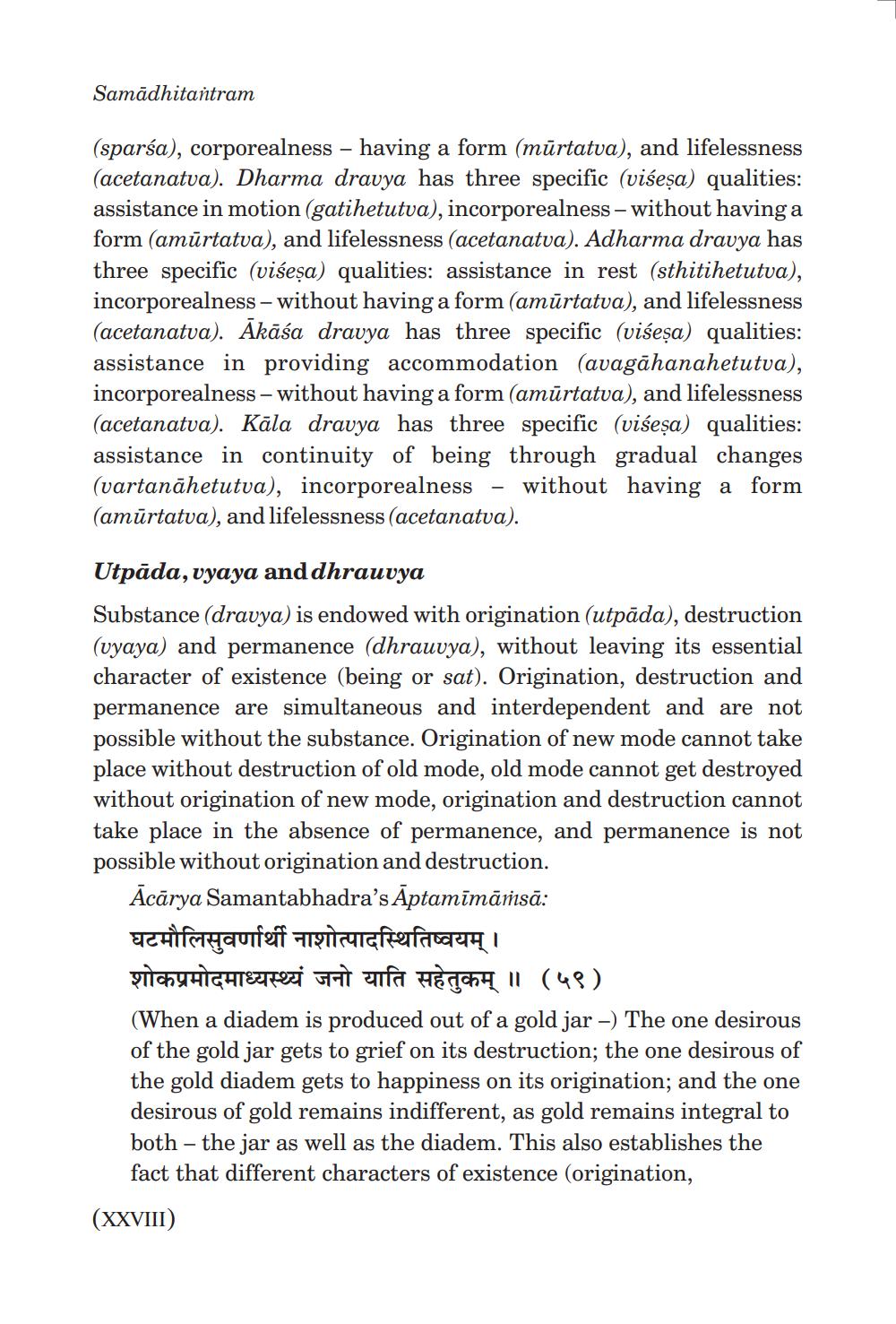________________
Samadhitantram
(sparsa), corporealness - having a form (murtatva), and lifelessness (acetanatva). Dharma dravya has three specific (viseṣa) qualities: assistance in motion (gatihetutva), incorporealness – without having a form (amūrtatva), and lifelessness (acetanatva). Adharma dravya has three specific (viseṣa) qualities: assistance in rest (sthitihetutva), incorporealness - without having a form (amurtatva), and lifelessness (acetanatva). Ākāśa dravya has three specific (viseṣa) qualities: assistance in providing accommodation (avagahanahetutva), incorporealness - without having a form (amūrtatva), and lifelessness (acetanatva). Kala dravya has three specific (viseṣa) qualities: assistance in continuity of being through gradual changes (vartanahetutva), incorporealness without having a form (amūrtatva), and lifelessness (acetanatva).
Utpada, vyaya and dhrauvya
Substance (dravya) is endowed with origination (utpada), destruction (vyaya) and permanence (dhrauvya), without leaving its essential character of existence (being or sat). Origination, destruction and permanence are simultaneous and interdependent and are not possible without the substance. Origination of new mode cannot take place without destruction of old mode, old mode cannot get destroyed without origination of new mode, origination and destruction cannot take place in the absence of permanence, and permanence is not possible without origination and destruction.
Acārya Samantabhadra's Āptamīmāṁsā:
घटमौलिसुवर्णार्थी नाशोत्पादस्थितिष्वयम् ।
शोकप्रमोदमाध्यस्थ्यं जनो याति सहेतुकम् ॥ (५९)
(When a diadem is produced out of a gold jar -) The one desirous of the gold jar gets to grief on its destruction; the one desirous of the gold diadem gets to happiness on its origination; and the one desirous of gold remains indifferent, as gold remains integral to both - the jar as well as the diadem. This also establishes the fact that different characters of existence (origination,
-
(XXVIII)




